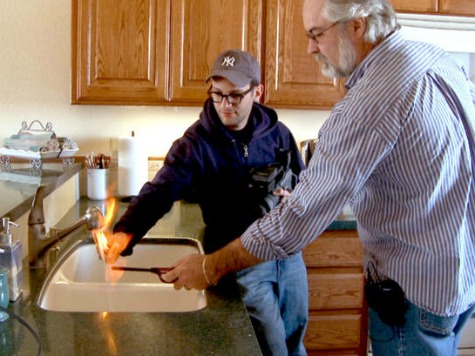The upcoming documentary Gasland Part II stirred up plenty of unwanted attention Sunday as ticket-holding farmers were barred from seeing the film and a reporter was arrested at the scene of the premiere.
The film is slated to be shown on HBO later this summer, but now is an appropriate time to remember some of the key conclusions drawn in the original film as well as how energy experts debunked them.
The following information is courtesy of The Institute for Energy Research:
Myth: “What I didn’t know was that the 2005 energy bill pushed through Congress by Dick Cheney exempts the oil and natural gas industries from the Clean Water Act, the Clean Air Act, the Safe Drinking Water Act…and about a dozen other environmental regulations.” (6:05)
The Facts: The oil and natural gas industry is regulated under every single one of these federal laws–under provisions of each that are relevant to its operations. The 2005 energy bill was supported by nearly three-quarters of the U.S. Senate, including then-Sen. Barack Obama of Illinois. In the U.S. House, 75 Democrats joined 200 Republicans in supporting the final bill.
Myth: “Fracking chemicals are considered proprietary.” (1:00:56)
The Facts: The entire universe of additives used in the fracturing process is known to the public and the state agencies that represent them. Not only do individual states mandate disclosure, the federal government does as well. The Occupational Safety and Health Administration (OSHA) mandates this information be kept at every wellsite and made readily available to response and medical personnel in case of an emergency.
Myth: “The fracking itself is like a mini-earthquake…. In order to frack, you need some fracking fluid — a mix of over 596 chemicals.” (6:50)
The Facts: The fracturing process uses a mixture of fluids comprised almost entirely (99.5%) of water and sand. The remaining materials, used to help deliver the water down the wellbore, are typically found and used around the house. The average fracturing operation utilizes fewer than 12 of these components, according to the Ground Water Protection Council–not 596. Over the course of its history, fracturing has not only been used to increase the flow of oil and natural gas from existing wells, but also to access things like water and geothermal energy. It’s even been used by EPA to clean up Superfund sites.
Myth: Flaming water is the result of natural gas drilling
The Facts: Colorado regulators issued a detailed refutation of the alleged link between shale drilling and flammable well water portrayed in Gasland. They noted that naturally occurring biogenic methane, unrelated to drilling, was the cause of flammable well water.
ProPublica explained: “Drinking water with methane, the largest component of natural gas, isn’t necessarily harmful. The gas itself isn’t toxic–the Environmental Protection Agency doesn’t even regulate it–and it escapes from water quickly, like bubbles in a soda.”

COMMENTS
Please let us know if you're having issues with commenting.